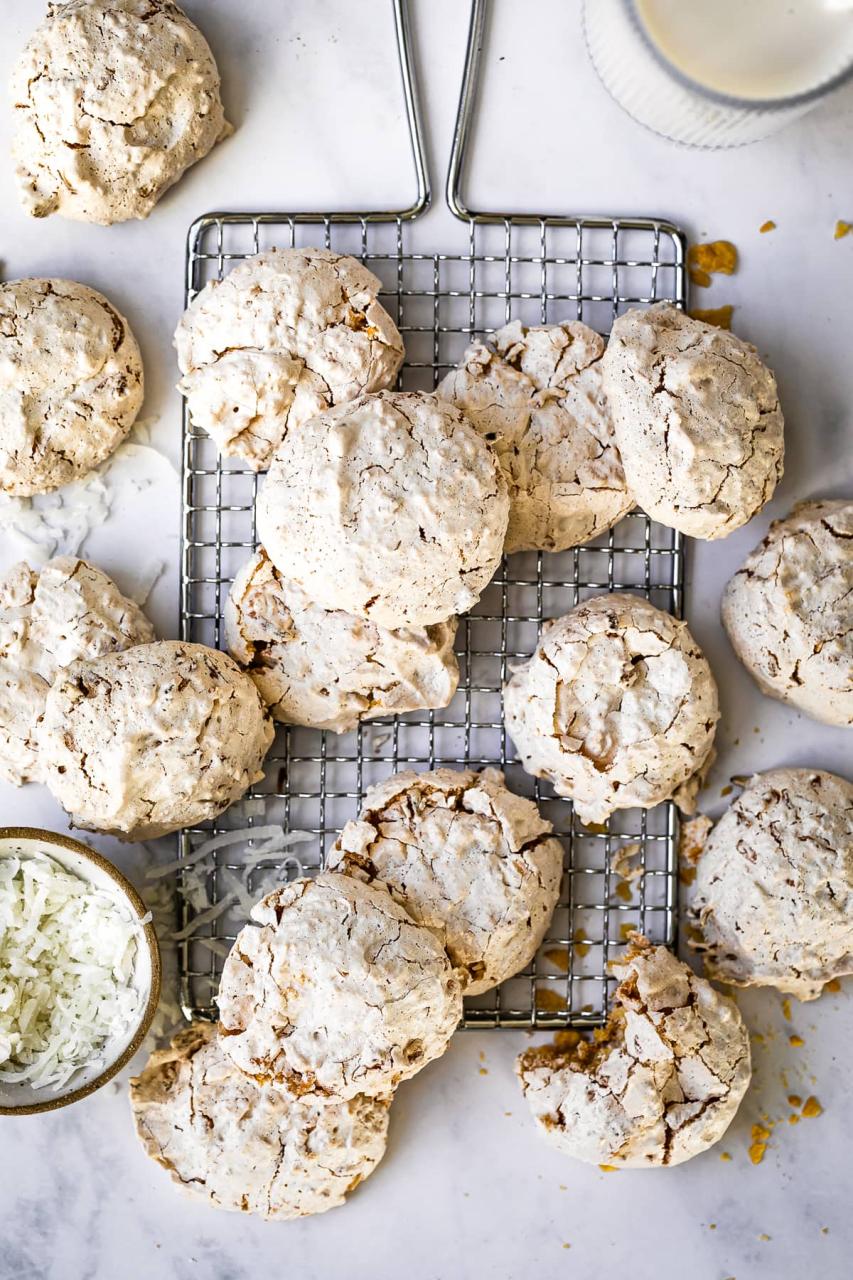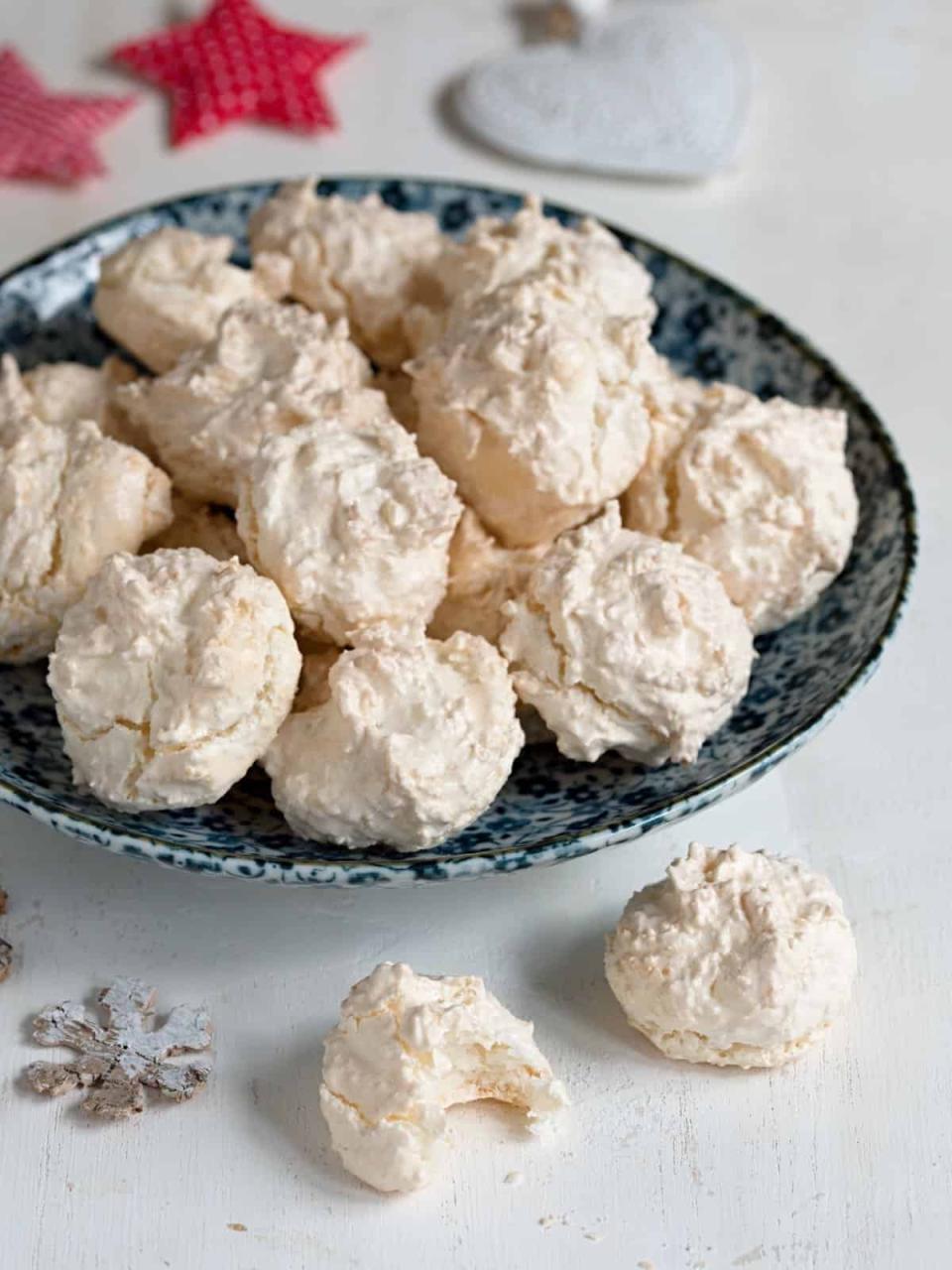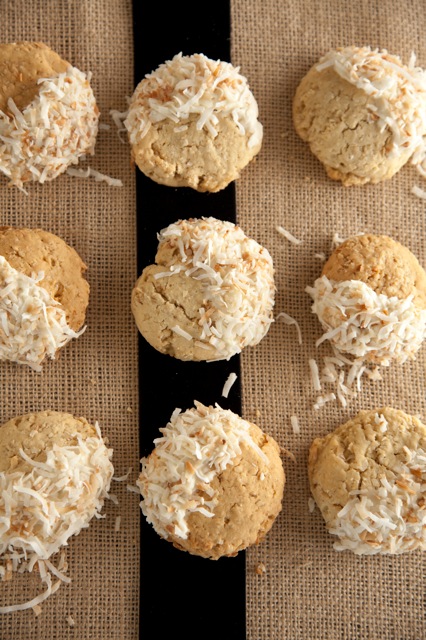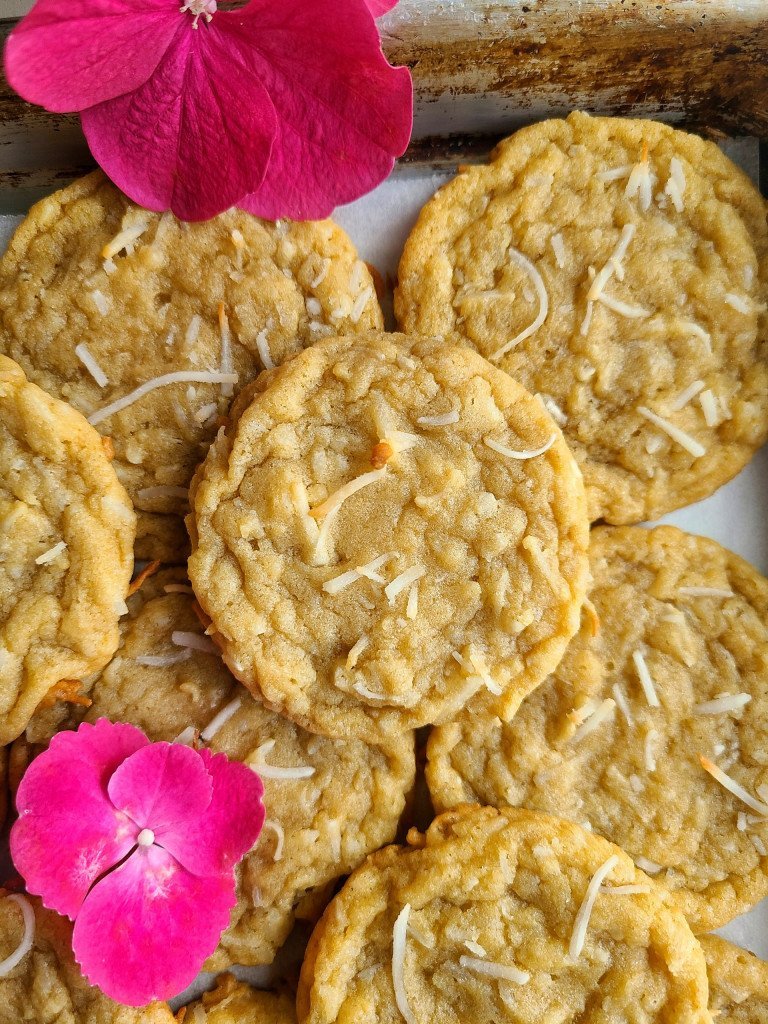Coconut cookies offer a delightful journey into the world of baking, where the tropical taste of coconut melds harmoniously with the sweet, comforting base of a traditional cookie. This introduction explores the delightful versatility, cultural significance, and joy of baking these aromatic treats that have charmed people across the globe.
Coconut, the fruit of the coconut palm, is a staple in tropical regions and has been revered for centuries not only for its culinary uses but also for its nutritional benefits. Coconut cookies, which incorporate coconut flesh, milk, or oil, are a testament to the ingredient’s adaptability and appeal. These cookies are celebrated in various forms around the world, from the chewy and moist coconut macaroons of Europe to the crunchy and sweet coconut biscuits found in parts of Asia and the Caribbean. Each variation reflects local tastes and traditions, making coconut cookies a global delight.
Coconut Cookies Recipe


Coconut Cookies
Equipment
- 1 oven
Ingredients
- 1/2 tsp. Vanilla
- 1/4 tsp. Xanthan gum
- 1/4 c. Almond meal
- 6 Tbsp. Coconut
- 2 tsp. Blackstrap molasses
- 1/4 c. Butter
- 1/3 c. Erythritol
Instructions
- For this recipe, you will need to get the oven all ready by turning it on and letting it get to all warmed up (350 degrees F). Bring out a sheet to bake with and place a single piece of parchment paper on top.
- Take out a small pan for the oven and place the erythritol, butter, and molasses inside. Cook these up until the erythritol is all gone and this mixture is starting to bubble.
- At that time, take it from the heat, add in the xanthan gum, mix around, and then add in the vanilla, coconut, and almond milk.
- Now you will need to stir pretty hard for a bit to turn this into a batter. Once that is one, drop some of the batter onto the baking sheet and then flatten it down.
- Make sure that one of the racks of the oven is near the top and put the cookies in to bake. Let them go in the oven until they are starting to brown a bit and then serve.
Cooking Tips about Coconut Cookies

- Choosing the Right Coconut: The type of coconut used can significantly affect the texture and flavor of your cookies. Shredded or desiccated coconut provides a more traditional texture and is excellent for mixing into doughs. For a moist and chewy texture, consider using freshly grated coconut.
- To Toast or Not to Toast: Toasting the coconut before adding it to your cookie batter can bring out a deep, nutty flavor. Simply spread the coconut on a baking sheet and toast in the oven at 350°F (175°C) until golden brown, keeping a close eye to prevent burning.
- Balancing Sweetness: Coconut is naturally sweet, and many coconut cookies also include sugar or sweetened condensed milk. Experiment with reducing the sugar amount if you prefer your cookies less sweet or if using sweetened coconut flakes.
- Incorporating Coconut Oil: For an extra layer of coconut flavor, use coconut oil instead of butter or other fats in your recipe. This can also make your cookies dairy-free for those with dietary restrictions.
- Moisture Content Matters: Coconut can absorb a lot of moisture from the dough. Depending on the desired texture of your cookies, you may need to adjust the amount of liquid ingredients to ensure your dough isn’t too dry or too sticky.
- Flavor Pairings: Coconut pairs wonderfully with a variety of flavors. Consider adding lime zest, chocolate chips, dried pineapple pieces, or nuts like macadamia or almonds to complement the coconut’s tropical taste.
- Chill the Dough: If your cookie dough is very soft or sticky, chilling it in the refrigerator for about 30 minutes before scooping can make it easier to handle and help the cookies maintain their shape during baking.
- Bake Time: Keep a close eye on your cookies as they bake, as coconut can go from perfectly toasted to burnt rather quickly. Baking just until the edges are golden brown will often result in a pleasantly chewy center.
Serving suggestions about Coconut Cookies

- Afternoon Tea Pairing: Coconut cookies make an exceptional accompaniment to afternoon tea. Serve them alongside a variety of teas such as Earl Grey, Jasmine, or Chamomile. The subtle sweetness and tropical flavor of the cookies pair beautifully with both floral and bold tea blends, creating a refined snack pairing.
- Ice Cream Sandwiches: For a fun and indulgent treat, use your coconut cookies to create ice cream sandwiches. Choose flavors that complement the tropical notes of coconut, like vanilla bean, mango, or chocolate. Simply place a scoop of softened ice cream between two cookies and gently press together. Freeze until firm for a delightful dessert.
- Dessert Charcuterie Board: Create an eye-catching dessert board featuring coconut cookies as the star. Surround them with various chocolates, nuts, sliced fruits (such as pineapple, kiwi, and berries), and small bowls of whipped cream or chocolate sauce for dipping. This not only offers a range of flavors and textures but also encourages guests to interact and customize their dessert experience.
- Tropical Parfait Layering: Crush coconut cookies and layer them in a glass with tropical fruits (like mango, papaya, and banana), yogurt, and a drizzle of honey to create a visually appealing and delicious parfait. The crunch of the cookies provides a lovely texture contrast to the creamy yogurt and juicy fruit.
- Coffee or Espresso Companion: Given their rich and aromatic nature, coconut cookies are perfect when paired with coffee or espresso. The robust flavors of the coffee beautifully complement the sweet and nutty notes of the cookies, making for a comforting and satisfying morning or midday snack.
- Gift-Wrapped Delicacies: Beautifully package your coconut cookies in clear cellophane bags tied with a ribbon or in decorative boxes for a thoughtful homemade gift. Include a tag with a personal message or serving suggestions for an extra touch of warmth.
- Elegant Dessert Plating: For a more sophisticated dessert, serve coconut cookies alongside a scoop of sorbet or gelato, garnished with mint leaves and a sprinkle of toasted coconut flakes. Drizzle with a light caramel or fruit sauce to enhance the flavors and add a touch of elegance to the presentation.
- Holiday and Special Occasions: During the holidays or special events, customize your coconut cookies with themed decorations, such as icing, colored sugars, or edible glitter. Serving them as part of the festive fare adds a unique touch that guests will remember.
Top 5 FAQs about Coconut Cookies

- What are the key ingredients needed for baking coconut cookies? For most coconut cookie recipes, the key ingredients include all-purpose flour (or coconut flour for a gluten-free alternative), sugar, butter or coconut oil, eggs, and of course, coconut in one or more forms such as desiccated, shredded, or freshly grated. Some variations might call for coconut milk or cream to enhance the coconut flavor and moisture.
- Can I make coconut cookies healthier or cater them to dietary restrictions? Yes, coconut cookies can be adapted to suit various dietary preferences and health considerations. Using coconut oil instead of butter offers a dairy-free option, and coconut flour can replace all-purpose flour for a gluten-free version. To reduce sugar content, you can experiment with lowering the amount of sugar or using natural sweeteners. Adding ingredients like nuts, seeds, or dried fruits can also boost nutritional value.
- How do I achieve the perfect texture for my coconut cookies, crispy or chewy? The texture of coconut cookies can be adjusted by altering the cooking time and temperature, as well as by tweaking the recipe’s wet to dry ingredient ratios. For crispier cookies, spread the dough thinner and bake at a slightly higher temperature. Chewier cookies can be achieved by adding more moist ingredients, like extra butter, coconut oil, or an additional egg, and by baking them just until they’re set.
- How can I store coconut cookies and how long will they last? To keep coconut cookies fresh, store them in an airtight container at room temperature. They typically last for about a week when stored properly. If you’ve used fresh coconut, consider storing them in the refrigerator to extend their freshness. For longer storage, you can freeze the cookies for up to three months; just ensure they’re tightly wrapped to prevent freezer burn.
- Can I add other flavors or ingredients to my coconut cookie recipe to vary the taste? Absolutely! Coconut cookies lend themselves well to experimentation with additional flavors and ingredients. Popular add-ins include chocolate chips, nuts (such as almonds or macadamia nuts), dried fruit (like cranberries or pineapple), and spices (cinnamon or vanilla). The natural sweetness and rich flavor of coconut make it a versatile base for a wide range of delicious combinations.
In summary, coconut cookies epitomize the wonderful confluence of flavor, culture, and nutrition. They represent a small indulgence that fits beautifully into the broader narrative of global culinary traditions, offering a bite-sized way to explore the rich tapestry of tastes that the world has to offer.
Leave a Reply